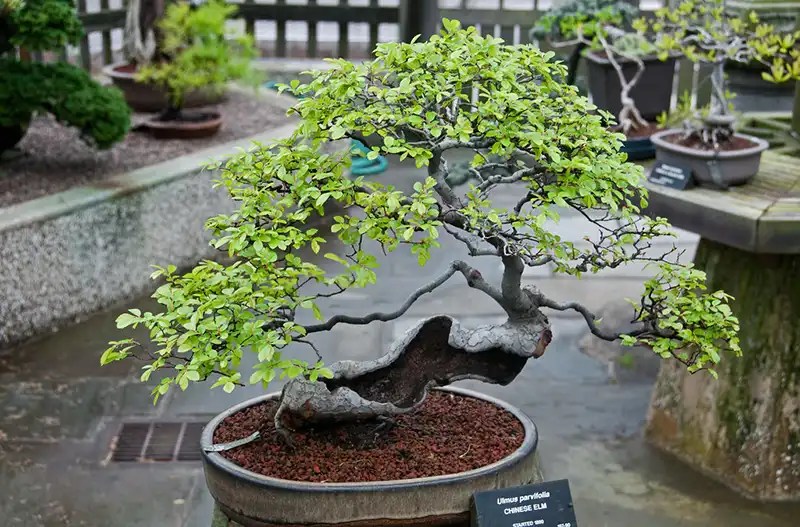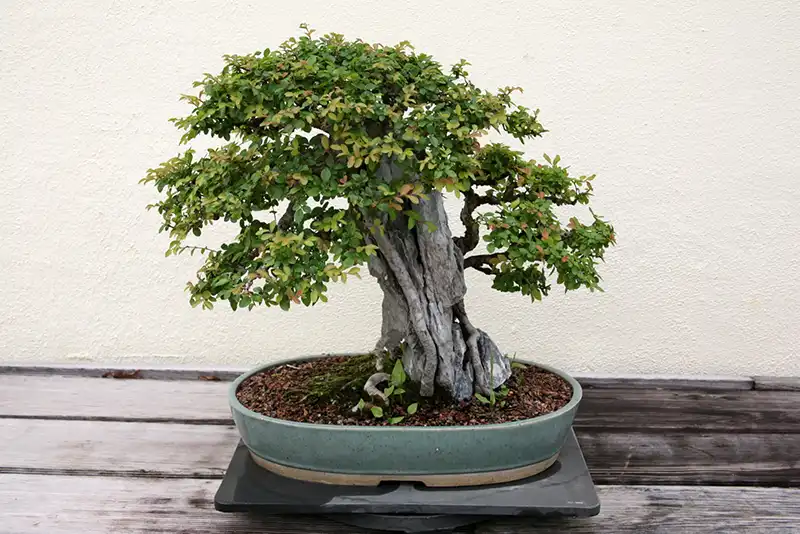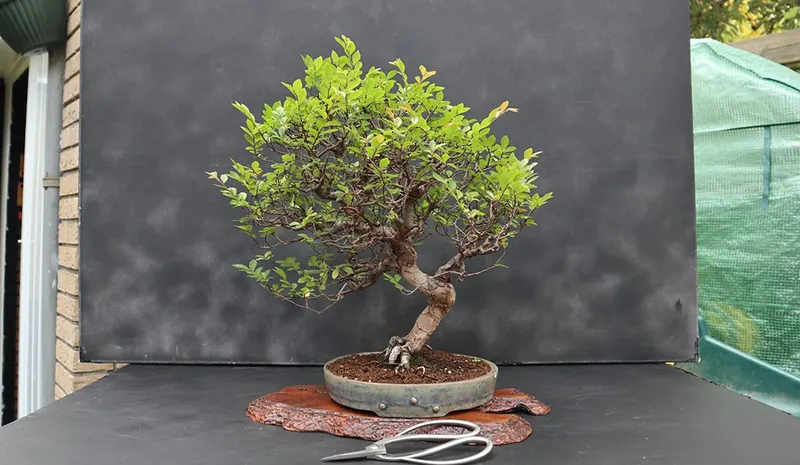Chinese Elm Bonsai Repotting Guide
To prevent your Chinese Elm Bonsai from becoming pot-bound and ultimately dying, it’s crucial to repot or transplant it regularly. A tree becomes pot-bound when the roots grow to the shape of the pot and fill it. If the roots lack nutrients because there’s no longer space for soil, the tree stops growing.
If you don’t repot it more or less every other year, it will die. Repotting your Bonsai into good new soil and trimming the roots will resupply it with the nutrients it needs to grow and flourish.
Image courtesy of Eric Kilby (license details)
When to Repot a Chinese Elm Bonsai Tree
The best time for you to repot your Chinese Elm Bonsai is early in the spring, while it’s still dormant after the winter cold. At this stage, the tree will be budding but not covered in foliage, so it’s a good time to minimize any shock or damaging effects of repotting it.
Repotting in early spring also means that as soon as the tree starts growing, it will quickly repair any damage to the root system that might have occurred. You should never repot your Bonsai in summer or winter.
How Often You Should Repot a Bonsai
How often you should repot your Bonsai depends on the size of the pot and how your tree has been growing. Repotting should not be routine. Early in spring, you should check your Chinese Elm Bonsai by carefully removing it from its pot. If the roots are circling and filling the pot, it’s time to repot it. If enough soil is holding the Bonsai’s roots, leave the tree for now and check it again next spring. The general rule is that you should repot fast-growing trees every two years. Some trees could need repotting at shorter intervals. You should only repot more mature or older trees every three to five years.
Use the Right Soil Mixture When you Repot
It’s vital for the health of your Bonsai to choose the correct soil mixture when you repot it.. The soil should allow water drain adequately to prevent the roots from rotting. But the mixture must absorb enough water to hydrate the Bonsai. Mixing one part each of akadama, pumice, and lava rock, gives you an excellent mixture that you can adapt according to the needs of your individual tree. Adding more akadama will create a mixture that absorbs more water. Adding more lava rock will allow more drainage. Your unique conditions and watering schedule should help you decide how to adapt your soil mixture.
Image courtesy of Albert Herring (license details)
How to Repot Your Chinese Elm Bonsai
You’ll need a root rake, wire cutter, scissors, and a chopstick to be able to repot your Chinese Elm Bonsai tree easily.
Step 1
Bonsai trees are often anchored to the pot they’re planted in with wire. If that’s the case with your tree, first cut the wire so that you can remove the tree from its pot.
Step 2
Next use a root rake to carefully remove your tree from its pot. Check the roots to see if repotting is necessary. If the roots are circling and filling the pot, it’s time to repot the tree.
Step 3
Carefully remove the old soil with a chopstick. “Comb” the roots with the chopstick, starting on the sides and moving on to the bottom of the tree until all the old soil is removed. Avoid damaging the roots.
Step 4
Cut away about 30 percent of the roots with scissors. You’ll see which roots are too long and must be cut back. Pruning the roots is vital to balance your tree’s growth.
Step 5
Decide whether to put you tree back in the same pot or use a bigger one. If you’re going to use a new pot, cover the drainage holes with mesh, held in place with wire. Attach another wire to anchor the tree to the pot later.
Step 6
Place a thin layer of heavy grain soil first to ensure good drainage. Lava rock, grit, or akadama, will work well. Next add another thin layer of specialised Bonsai soil.
Step 7
Put the tree into your prepared pot. Use the wire you attached to the pot in Step 5 to anchor the tree. Arrange the roots so they are nicely spaced. Then add your Bonsai soil. Use a chopstick to work the soil into the container to get rid of any air pockets around the roots. Ensure that you put enough soil into the pot to cover the roots of your tree.
Step 8
Water your replanted Bonsai tree well. Watering regularly is an important part of keeping your tree healthy. But it’s very important not to over-water your tree and it must never become waterlogged. If you neglect this vital step, your tree will die. Chinese Elms usually need to be watered every second day to give the soil time to dry a little in between.
Remember These Basic Care Guidelines
Place your Bonsai where it gets plenty of morning sunlight. Make sure enough air circulates where you keep your tree. Feed your Bonsai with fertilizer every other week. Protect your tree against pests and fungal infections. Following these guidelines will ensure that your tree grows well and stays healthy until you repot it again.
Image courtesy of Jerry Norbury
Conclusion
Repotting your Chinese Elm Bonsai tree might seem complicated at first. But practice makes perfect and it becomes easier every time. It’s an essential skill for anyone cultivating and nurturing Bonsai trees to learn. It ensures the continued survival of the tree in good health with enough nutrients to feed and sustain it. It will have enough space after repotting for its roots to grow and ensure the continued life of your beautiful tree until you might have to repot it again in two years’ time.






